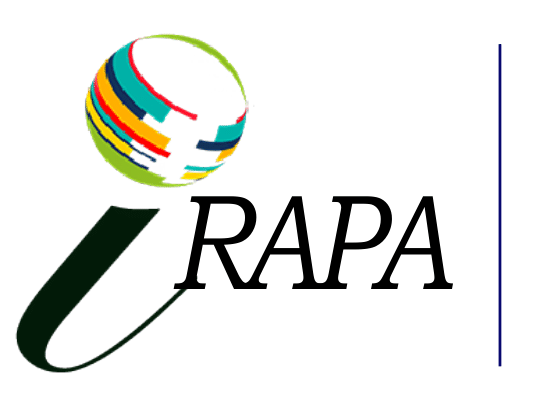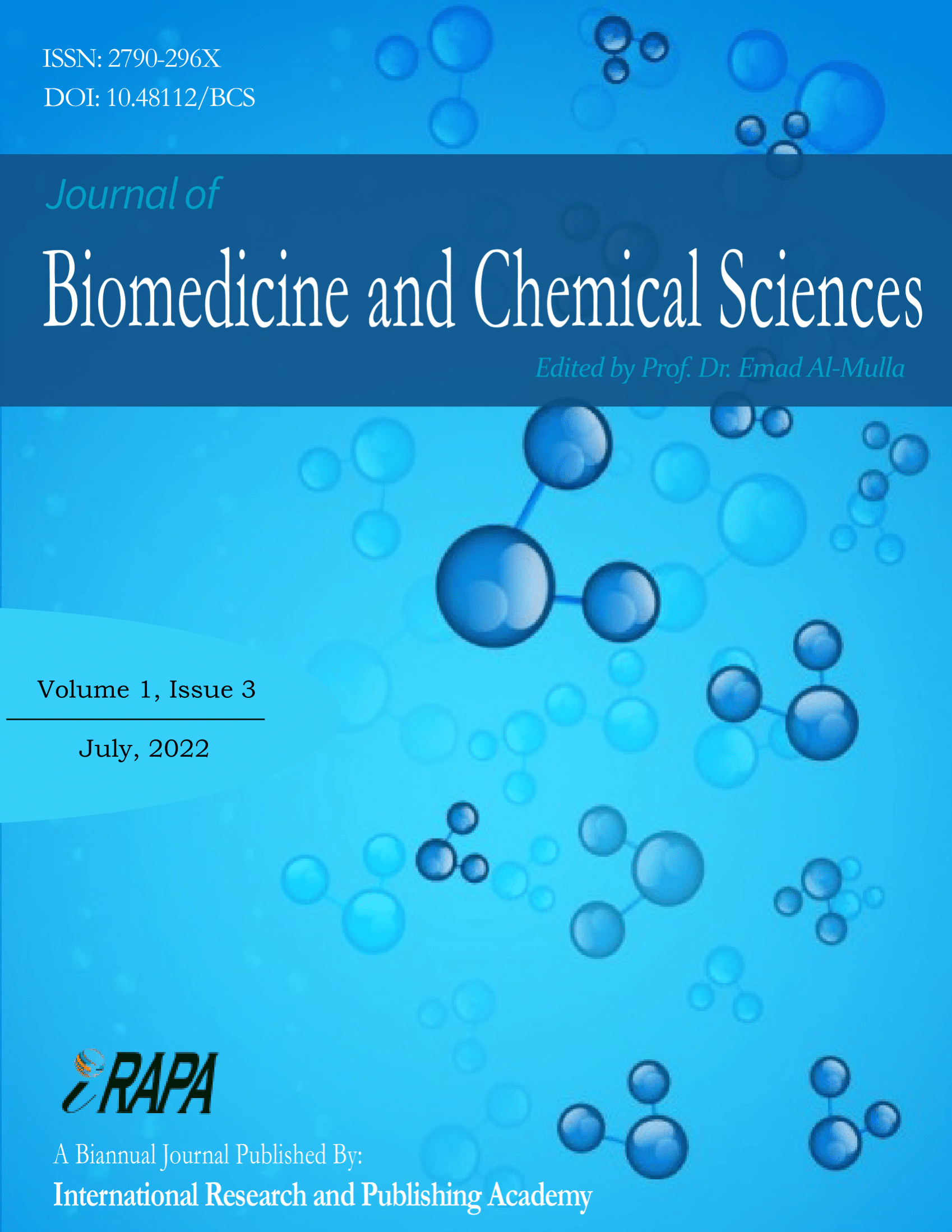Mustafa M. Grafa
 Education Directorate of Basrah, Ministry of Education, Basrah – Iraq
Education Directorate of Basrah, Ministry of Education, Basrah – Iraq
 mostafamohsen069@gmail.com
mostafamohsen069@gmail.com
 Corresponding Author
Corresponding Author
Hanan M. Ali
 Education Directorate of Basrah, Ministry of Education, Basrah – Iraq
Education Directorate of Basrah, Ministry of Education, Basrah – Iraq
In this study, 2,5-dimethyl-4-((4-nitrobenzylidene) amino) phenol (A1), N,N'-([1,1'-biphenyl]-4,4'-diyl)bis(1-(2,4-dimethoxyphenyl)methanimine (A2) and 4,4'-(([1,1'-biphenyl]-4,4'-diylbis(azaneylylidene))bis (methaneylylidene))bis(2-methoxyphenol) (A3) were synthesised. Analytical studies were then carried on (A1), (A2) and (A3); the results of the solvent effect were displayed that the best solubility was in ethanol and DMSO of each, which is due to the fact that the effect of the dielectric constant is the main factor that can control the shift of the absorption beaks. The results were also indicated, that there is a slight deviation from the linear relationship in (A3) that may have related to the hydrogen bond between this base and the solvent. However, the results of the pH effect of (A1), (A2) and (A3) in a range of buffer solution were gave two isopiestic points just in (A3). Due to the ionization constant (pKa) and the protonation constant (pKp) were calculated by using the half height method. Further, the results were indicated the existence of the equilibrium schemes of which displays the suggested ionization of (A3) in acidic and basic medium. Further, the effect of the prepared Schiff bases (A1, A2, and A3) were studied on breast cancer cells type MCF-7 using five different concentrations of each. The results were showed high inhibition activities of each especially at high concentration, due recommend these bases as novel anti-cancer drugs.

- Baluja, S., Solanki, A., & Kachhadia, N. (2006). Evaluation of biological activities of some Schiff bases and metal complexes. Journal of the Iranian Chemical Society, 3(4), 312-317. https://doi.org/10.1007/BF03245952
- Banerjee, S., & Chakravarty, A. R. (2015). Metal complexes of curcumin for cellular imaging, targeting, and photoinduced anticancer activity. Accounts of Chemical Research, 48(7), 2075-2083. https://doi.org/10.1021/acs.accounts.5b00127
- Cimerman, Z., Galic, N., & Bosner, B. (1997). The Schiff bases of salicylaldehyde and aminopyridines as highly sensitive analytical reagents. Analytica Chimica Acta, 343(1-2), 145-153. https://doi.org/10.1016/S0003-2670(96)00587-9
- Coombs, R. R., Ringer, M. K., Blacquiere, J. M., Smith, J. C., Neilsen, J. S., Uh, Y. S., ... & Baerlocher, F. J. (2005). Palladium (II) Schiff base complexes derived from sulfanilamides and aminobenzothiazoles. Transition metal chemistry, 30(4), 411-418. https://doi.org/10.1007/s11243-004-7625-4
- De Vizcaya-Ruiz, A., Rivero-Muller, A., Ruiz-Ramirez, L., Kass, G. E. N., Kelland, L. R., Orr, R. M., & Dobrota, M. (2000). Induction of apoptosis by a novel copper-based anticancer compound, casiopeina II, in L1210 murine leukaemia and CH1 human ovarian carcinoma cells. Toxicology in Vitro, 14(1), 1-5. https://doi.org/10.1016/S0887-2333(99)00082-X
- Fasina, T. M., Ejiah, F. N., Dueke-Eze, C. U., & Idika, N. (2013). Substituent effect on the antimicrobial activity of schiff bases derived from 2-aminophenol and 2-aminothiophenol. International Journal of Biological Chemistry, 7 (2), 79 – 85. https://ir.unilag.edu.ng/handle/123456789/5274
- Gaber, M., El-Wakiel, N., & Hemeda, O. M. (2019). Cr (III), Mn (II), Co (II), Ni (II) and Cu (II) complexes of 7-((1H-benzo [d] imidazol-2-yl) diazenyl)-5-nitroquinolin-8-ol. synthesis, thermal, spectral, electrical measurements, molecular modeling and biological activity. Journal of Molecular Structure, 1180, 318-329. https://doi.org/10.1016/j.molstruc.2018.12.006
- Galić, N., Cimerman, Z., & Tomišić, V. (2008). Spectrometric study of tautomeric and protonation equilibria of o-vanillin Schiff base derivatives and their complexes with Cu (II). Spectrochimica Acta Part A: Molecular and Biomolecular Spectroscopy, 71(4), 1274-1280. https://doi.org/10.1016/j.saa.2008.03.029
- Hammud, H. H., Bouhadir, K. H., Masoud, M. S., Ghannoum, A. M., & Assi, S. A. (2008). Solvent effect on the absorption and fluorescence emission spectra of some purine derivatives: spectrofluorometric quantitative studies. Journal of Solution Chemistry, 37(7), 895-917. https://doi.org/10.1007/s10953-008-9289-8
- Hosseini, F. S., Falahati-Pour, S. K., Hajizadeh, M. R., Khoshdel, A., Mirzaei, M. R., Ahmadirad, H., ... & Mahmoodi, M. (2017). Persian shallot, Allium hirtifolium Boiss, induced apoptosis in human hepatocellular carcinoma cells. Cytotechnology, 69(4), 551-563. https://doi.org/10.1007/s10616-017-0093-4
- Huang, T. C. (1997). Combined effects of a buffer and solvent on tetramethylpyrazine formation in a 3-hydroxy-2-butanone/ammonium hydroxide system. Bioscience, Biotechnology, and Biochemistry, 61(6), 1013-1015. https://doi.org/10.1271/bbb.61.1013
- Johnstone, T. C., Park, G. Y., & Lippard, S. J. (2014). Understanding and improving platinum anticancer drugs–phenanthriplatin. Anticancer Research, 34(1), 471-476. https://ar.iiarjournals.org/content/34/1/471
- Khalil, R. A., Jalil, A. H., & Abd-Alrazzak, A. Y. (2009). Application of a Schiff base derived from sulfanilamide as an acid-base indicator. Journal of the Iranian Chemical Society, 6(2), 345-352. https://doi.org/10.1007/BF03245844
- Majeed, W., Aslam, B., Javed, I., Khaliq, T., Muhammad, F., Ali, A., & Raza, A. (2014). Breast cancer: major risk factors and recent developments in treatment. Asian Pacific Journal of Cancer Prevention, 15(8), 3353-3358. https://doi.org/10.7314/APJCP.2014.15.8.3353
- Parkin, D. M., Bray, F., & Ferlay, J. (2005). Pisani P Global cancer statistics. CA Cancer J Clin, 55(2), 74-108.
- Pretsch, E., Bühlmann, P., Affolter, C., Pretsch, E., Bhuhlmann, P., & Affolter, C. (2009). Structure determination of organic compounds (Vol. 13, pp. 269-335). Berlin: Springer.
- Silverstein, R. M., & Bassler, G. C. (1962). Spectrometric identification of organic compounds. Journal of Chemical Education, 39(11), 546.
- Sondhi, S. M., dinodia, M., jain, S., & kumar, A. (2009). Synthesis of biologically active novel bis Schiff bases, bis hydrazone and bis guanidine derivatives. Indian journal of chemistry. Sect. B: Organic chemistry, including medical chemistry, 48(8), 1128-1136.
- Zhang, C. X., & Lippard, S. J. (2003). New metal complexes as potential therapeutics. Current Opinion in Chemical Biology, 7(4), 481-489. https://doi.org/10.1016/S1367-5931(03)00081-4
How to Cite:
Grafa, M. M., & Ali, H. M. (2022). Synthesis, Characterization and Analytical Studies of Three Newly Schiff Bases As A New Anti-Human Breast Cancer (MCF-7). Biomedicine and Chemical Sciences, 1(3), 168–177. https://doi.org/10.48112/bcs.v1i3.127
Publisher’s Note:
International Research and Publishing Academy (iRAPA) stands neutral with regard to jurisdictional claims in the published maps and institutional affiliations.
Copyright:
© 2022 Biomedicine and Chemical Sciences published by International Research and Publishing Academy (iRAPA) - Pakistan Co-published by Al-Furat Al-Awsat Technical University - Iraq
This is an Open Access article published under the Creative Commons Attribution 4.0 International (CC BY 4.0) (https://creativecommons.org/licenses/by/4.0/)
Creative Commons Attribution (CC BY): lets others distribute and copy the article, to create extracts, abstracts, and other revised versions, adaptations or derivative works of or from an article (such as a translation), to include in a collective work (such as an anthology), to text or data mine the article, even for commercial purposes, as long as they credit the author(s), do not represent the author as endorsing their adaptation of the article, and do not modify the article in such a way as to damage the author's honour or reputation.
Frequently Used
Recent Articles











